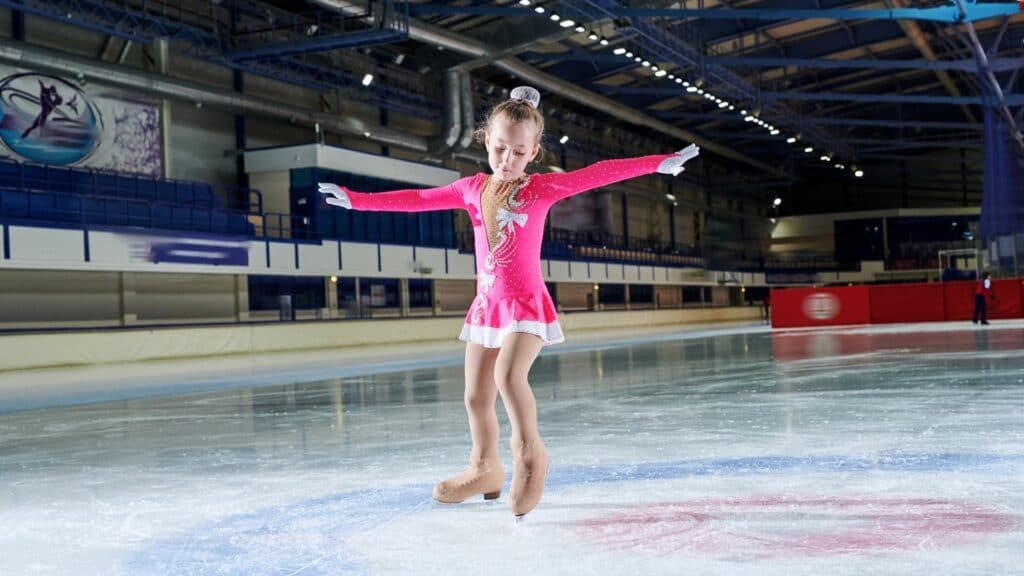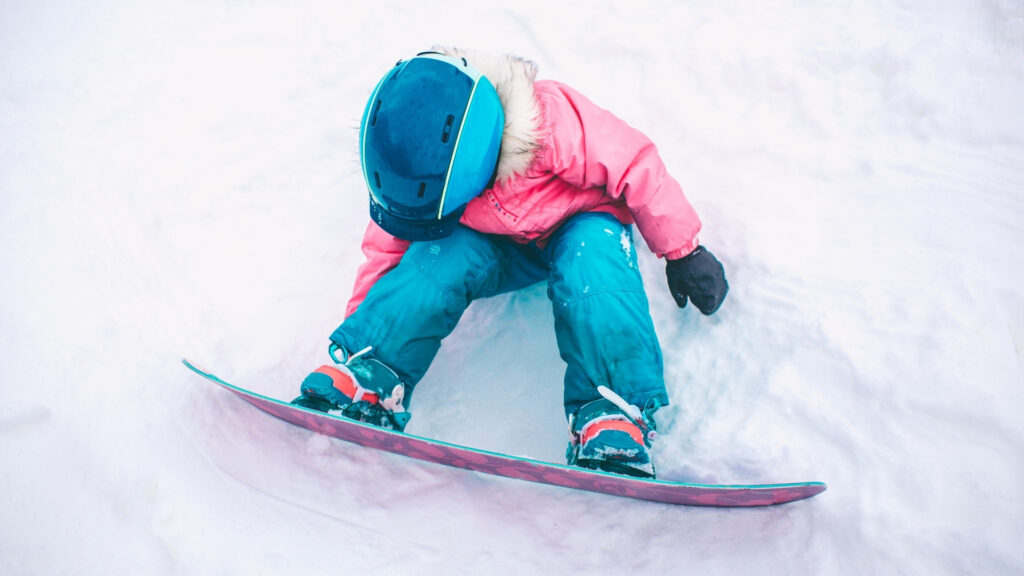Equestrian Sports for Children
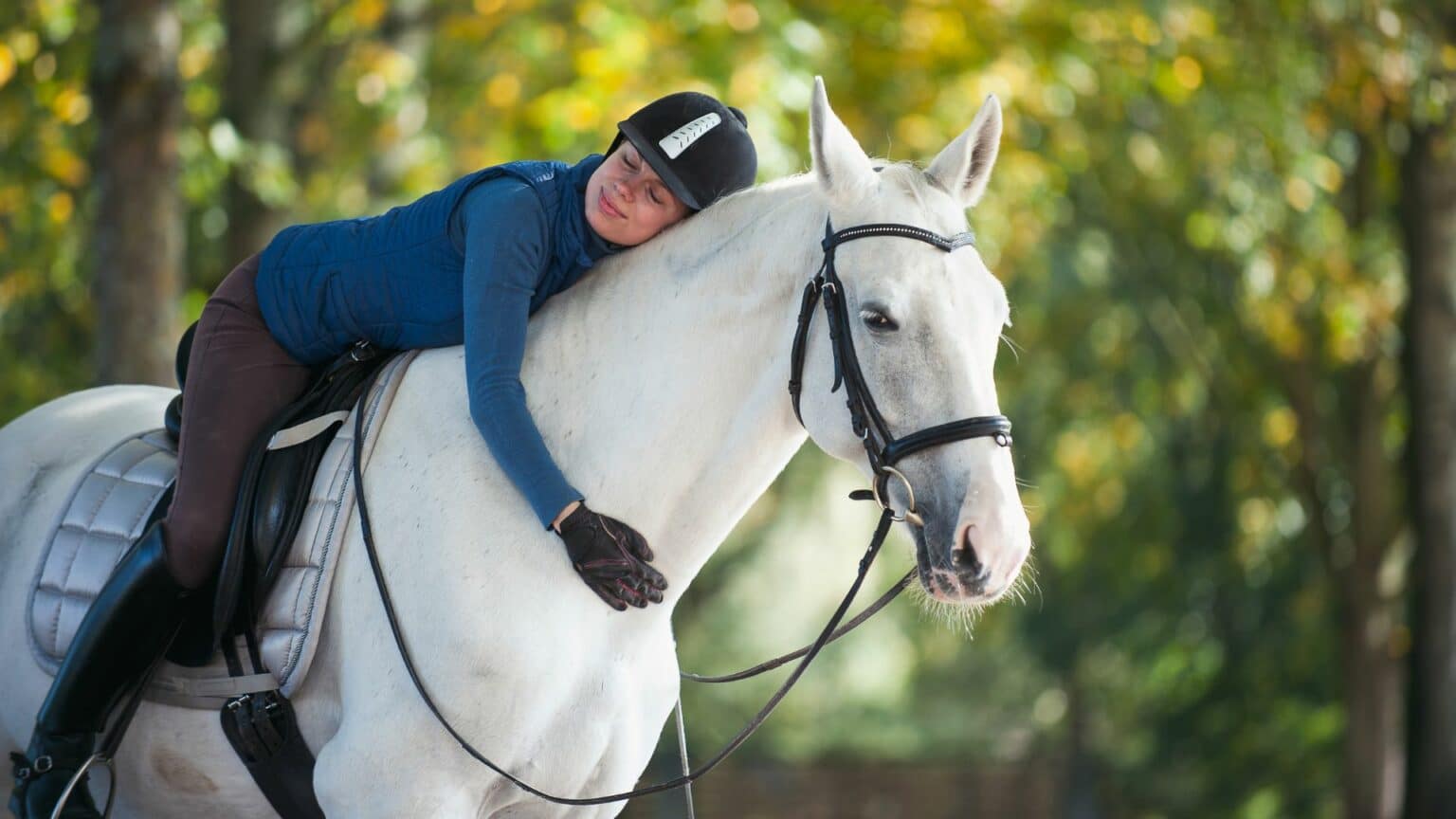
Last Updated: November 16, 2022
Equestrian sports are a great way for children to get involved in an active lifestyle. Not only do they get to spend time outdoors, but they also learn responsibility, patience, and teamwork.
There are many different types of equestrian sports that children can participate in. One of the most popular is show jumping. In this sport, riders must navigate their horse over a series of jumps, while staying within a certain time limit. It takes a lot of practice and coordination to master this sport, but it is very rewarding.
Other popular equestrian sports include dressage and eventing. Dressage is all about precision and elegance, as riders must guide their horse through a series of intricate movements. Eventing is a bit more intense, as it combines dressage with cross-country obstacles and jumping. This sport requires not only physical fitness from the rider, but also endurance and stamina from the horse.
If your child is interested in getting involved in equestrian sports, there are many different ways to do so. You can enroll them in lessons at a local riding school, or join a youth club or team. There are also competitions held throughout the country that your child can participate in. No matter what level your child is at, there is a place for them in the equestrian world.
Remember, the most important thing is that your child enjoys riding. If he or she isn’t having fun, then it’s probably not the right activity. Be encouraging and positive, and try to make each lesson an enjoyable experience. With a little patience and persistence, you’ll soon see your child galloping around the arena with a big smile on his or her face!
What is the best age to start riding?
The most experts agree that around four or five years old is generally a good age to start riding lessons. If your child shows an interest in horses and you think they may be ready for riding lessons, there are a few things you can do to prepare them. Firstly, introduce them to horses in a safe environment such as at a petting zoo or farm visit. This will help them get used to being around horses and hopefully make them more comfortable when they’re around them in the future. If your child is interested in riding, consider enrolling them in lessons at a local stable.
This will give them the opportunity to learn how to safely control and ride a horse. It’s important that they receive proper instruction from a qualified instructor so that they can avoid injuries. For larger children, joining a Pony Club or 4-H group can be a great way for them to get involved in equestrian sports and meet other like-minded kids. There are often competitions and events held throughout the year that these groups participate in, so it’s a great way for your child to get started in the sport.
There are many benefits to starting riding lessons at a young age. Children who start riding at a young age often develop a strong bond with their horse and a deep love for the sport. They also tend to progress quickly and excel in their riding skills.
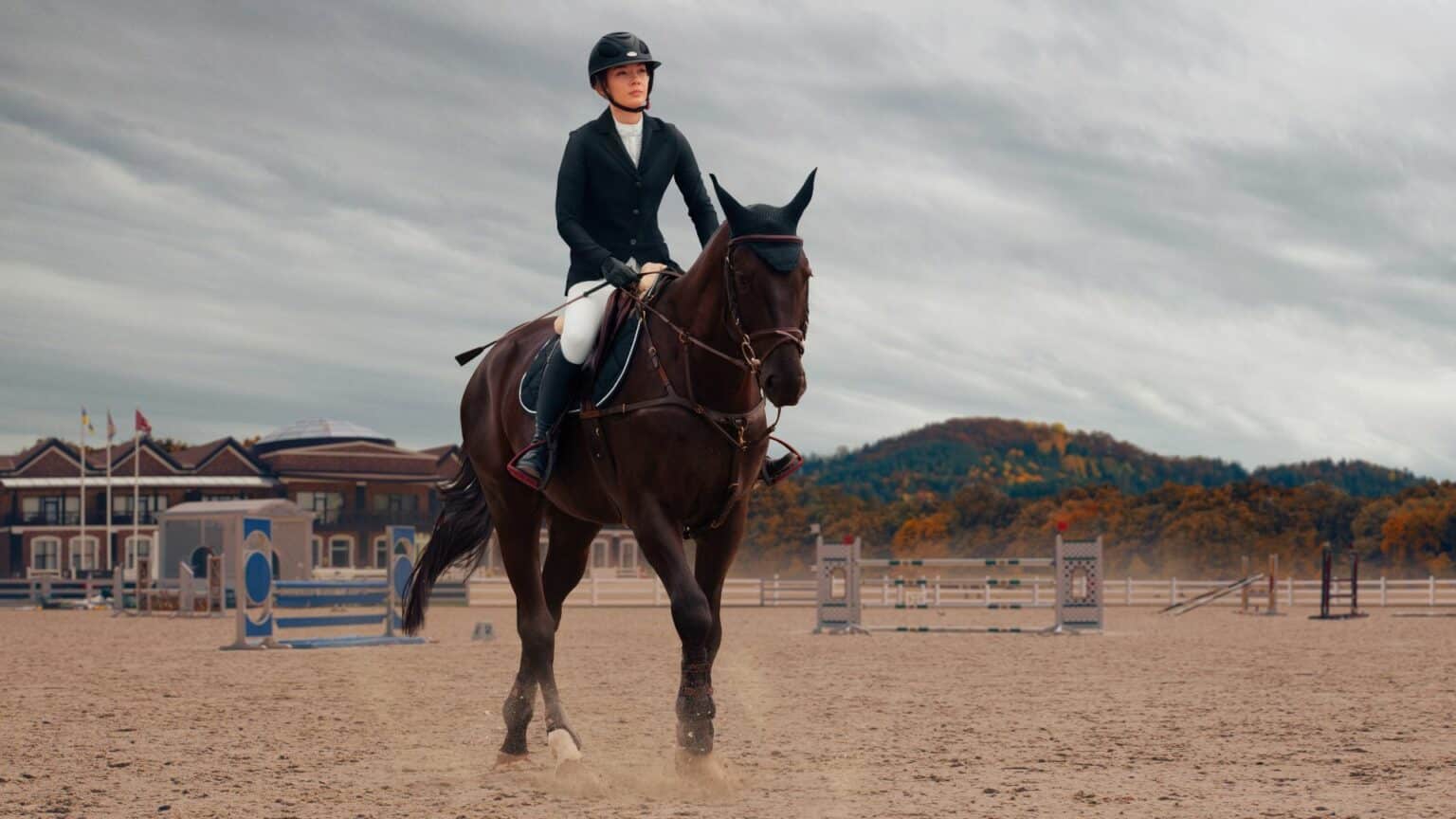
Another benefit of starting young is that it gives children time to learn proper riding technique before they start competing. Many sports involve complex movements that can be difficult for younger children to master. However, by the time they reach competition level, they will have had several years to perfect their technique. This will give them a big advantage over their competitors who started riding later in life.
While some parents choose to wait until their children are a bit older to start riding, there are several benefits to starting at an early age. For one, younger riders tend to be more fearless and have less of a sense of danger than their older counterparts. This can be advantageous when it comes to learning new riding skills and conquering obstacles on the course.
In addition, younger riders usually have more energy and enthusiasm for the sport than older riders. They’re also typically less inhibited by fears or anxiety about falling off or getting hurt. As such, they’re more likely to take risks and push themselves outside of their comfort levels — which can ultimately lead to faster progress and improved riding skills.
Finally, starting young riders out in equestrian sports can help instill a lifelong love for the sport. Many adults who ride today started doing so as children, and many of them credit their early experiences with fostering a deep passion for horses and riding.
So if you’re considering enrolling your child in riding lessons or signing them up for their first horse show, don’t hesitate to do so — the earlier they start, the better!
What equipment do you need to get started in equestrian sports?
Different types of horseback riding require different types of equipment. English riding, for example, generally requires a saddle with a flat seat and stirrups that hang at an even height, while Western riding often uses a saddle with a raised seat and fenders that protect the rider’s legs. Here is a list of essential tack and equipment used in various equestrian disciplines.
English Riding: Bridle, Saddle, Stirrups
Bridles are available in many different styles, but all function to hold the bit in the horse’s mouth and give the rider control over the head. The most common type of bridle used in English riding is called a snaffle bridle because it has a plain leather or nylon noseband and simple metalbits without any curb chains or leverage devices. A bitless bridle may also be used which gives control to the rider without going into the horse’s mouth. There are also several types of saddles used in English riding including close contact jumping saddles, all-purpose saddles, dressage saddles, and endurance saddles. Jumping stirrups have a larger opening and are more angled than dressage stirrups, which helps the rider keep their foot in the correct position.
Most English riding disciplines require riders to wear a helmet, breeches or jodhpurs, tall leather boots, and gloves. In addition, many riders also choose to wear a vest or jacket.Whether you’re just getting started in horseback riding or you’re looking to get back into it after some time away, you might be wondering what kind of equipment you need. The most important piece of equipment for any rider is a properly fitting saddle. A good saddle will not only make your ride more comfortable but it will also help you stay balanced and secure in the saddle.
There are several different types of saddles used in English riding including close contact jumping saddles, all-purpose saddles, dressage saddles, and endurance saddles. If you’re planning on doing mostly pleasure riding or trail riding, an all-purpose saddle would likely be the best option for you. However, if you’re interested in competing in show jumping or eventing competitions then you would need a close contact jumping saddle. And if dressage is your thing then you’ll need a dressage saddle.
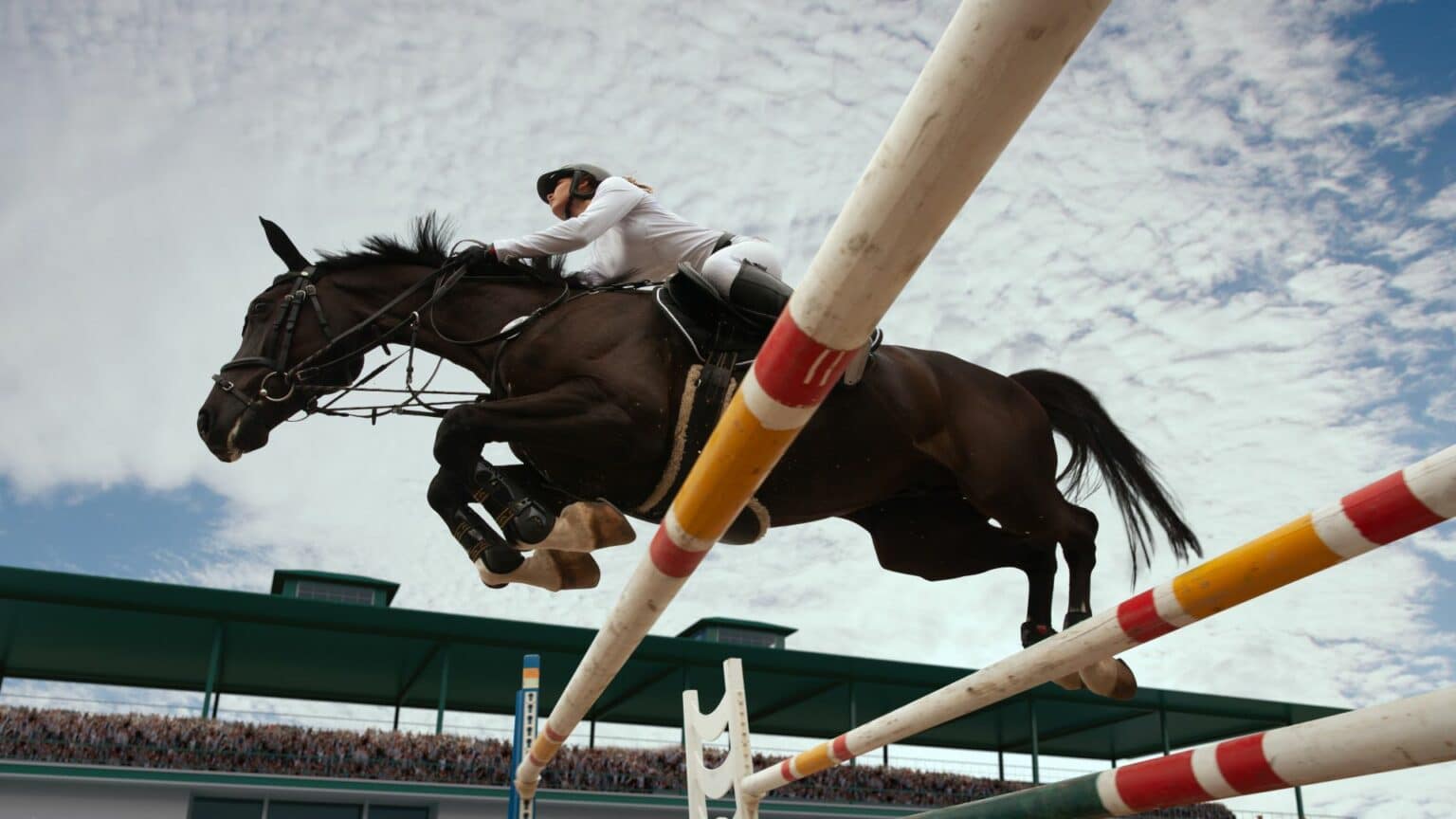
There are some other pieces of tack that you might need depending on the discipline you want to pursue. For example, if you’re into cross-country riding then you may need a breastplate and/or running martingale. But generally speaking, the type of saddle you use will be the biggest determining factor in what other tack you might need.
Of course, no matter what your chosen discipline is, you’ll also need a bridle and bit. And most riders also like to have a crop or whip handy as well. Beyond that, though, it’s really up to personal preference as to what else you might want to add to your list of must-have equestrian gear.
So there you have it! A basic rundown of the types of gear you’ll need to get started in equestrian sports. Of course, this is just a starting point – as you continue your journey in horseback riding you may find that there are other items that become essential for your rides. But at least now you have a good foundation to work from!
What's the difference between flat and jumping riding?
There are many different types of horseback riding, and each has its own unique benefits. One popular question that riders often ask is, «What’s the difference between flat and jumping riding?»
To answer this question, it’s first important to understand the basics of each type of riding. Flat riding simply refers to riding on a level surface without any jumps or other obstacles. This type of riding can be used for both pleasure and competition purposes. Jumping, on the other hand, involves going over obstacles such as fences or small hurdles. This type of riding is typically done for competition purposes only.
Now that you know the basics, let’s take a more in-depth look at the differences between flat and jumping riding. Perhaps one of the most obvious differences is in the level of difficulty. Flat riding is generally considered to be much easier than jumping since there are no obstacles to overcome. For this reason, flat racing is often seen as a good entry point for those new to horseback riding or racing altogether.
Another key difference between flat and jumping Riding has to do with speed. Flat rides are typically slower paced since there isn’t anything get in the way of the horse’s stride (i.e., no obstacles to jump). This allows the rider to have more control over the horse. Jumping rides, on the other hand, are often faster since the horse has to clear an obstacle. This can be exhilarating for both the horse and rider, but it also means that the rider has less control.
One of the most important differences between flat and jumping Riding is training. Flat rides require a lot of precise movements from both horse and rider in order to maintain control at high speeds. There is also a great deal of communication required between riders since they need to be constantly aware of their surroundings. Jumping riders need to be able to trust their horses implicitly since they will be asking them to do things that may seem dangerous, such as jumping over a fence or hedge. This trust can only be built up through hours of training and practice together.
When you are riding your horse, there are two main ways that you can sit in the saddle. The first way is called flat riding, and the second way is called jumping. Both have their own benefits and drawbacks, so it’s important to know the difference between the two before you decide which one is right for you.
Flat riding is when you sit upright in the saddle with your legs hanging down straight underneath you. This type of riding is good for beginners because it’s relatively easy to balance yourself in this position. It’s also good if you want to ride at a slower pace, since it’s difficult to go fast when you’re sitting up straight like this. However, flat riding can be uncomfortable after awhile because your legs can start to feel cramped from being in the same position for an extended period of time.
Jumping is when you lean forward slightly in the saddle and bring your legs up so that your knees are bent at about a 90 degree angle. This position gives you more control over your horse since you can use your legs to cue him as to what you want him to do (such as going faster or turning). It also allows you to absorb more of the shock from cantering and galloping, which is important since it’s easier on your horse’s joints.

When you’re first starting out, it’s often recommended that you ride with a coach or experienced rider. This will help ensure that you have proper form and don’t develop any bad habits. Once you have a good understanding of how to ride correctly, you can start working on your own.
If you want to go faster, you can use your legs to cue your horse to canter or gallop. You can also ask him to turn by using your inside leg slightly behind the girth and outside leg slightly in front of the girth (this is called “inside leg yield”). If he starts to slow down, you can give him a little tap with your crop or whip to encourage him to go faster. Remember that horses respond best to positive reinforcement, so try not to get too frustrated if he doesn’t immediately do what you want. Instead, praise him when he does something well and he’ll be more likely to repeat it in the future.
Jumping is a whole different ball game! When you’re jumping, it’s not just about pedaling hard and going fast. You have to be in complete control of your bike, and you have to be able to make quick adjustments on the fly. That’s why jumping is such a great workout for your legs and core — you’re constantly using those muscles to keep yourself balanced and centered over the bike.
Flat riding, on the other hand, is all about efficiency. You want to pedal as smoothly as possible so you can maintain a high speed without tiring yourself out too quickly. It’s also important to stay relaxed while flat riding — if you’re tense, you’ll use more energy than necessary and won’t be able to ride as far or as fast.
Of course, there are different levels of flat and jumping riding — you don’t have to be an Olympic-level athlete to enjoy either! But if you’re looking for a real challenge, then try taking on some jumps. You might just surprise yourself with how much fun it is!
How long does it take to become a good rider?
For beginner riders who are just starting out, the process of learning to ride can be slow going at first. It takes time to get used to being on a horse and understanding how they move and respond to your commands. Even if you have some experience with other animals or sports that require coordination and balance, horses are unique creatures with their own way of moving and reacting. This means that it will likely take some time for you even to feel comfortable in the saddle; don’t be discouraged if it seems like you’re not making progress as quickly as you would like.
As you continue taking lessons and gaining more experience handling horses, you will start to develop your own riding style and technique. You’ll learn what works best for you in terms of communicating with your horse and controlling its movement. With practice, you’ll find yourself becoming more confident and able to control your horse with ease.
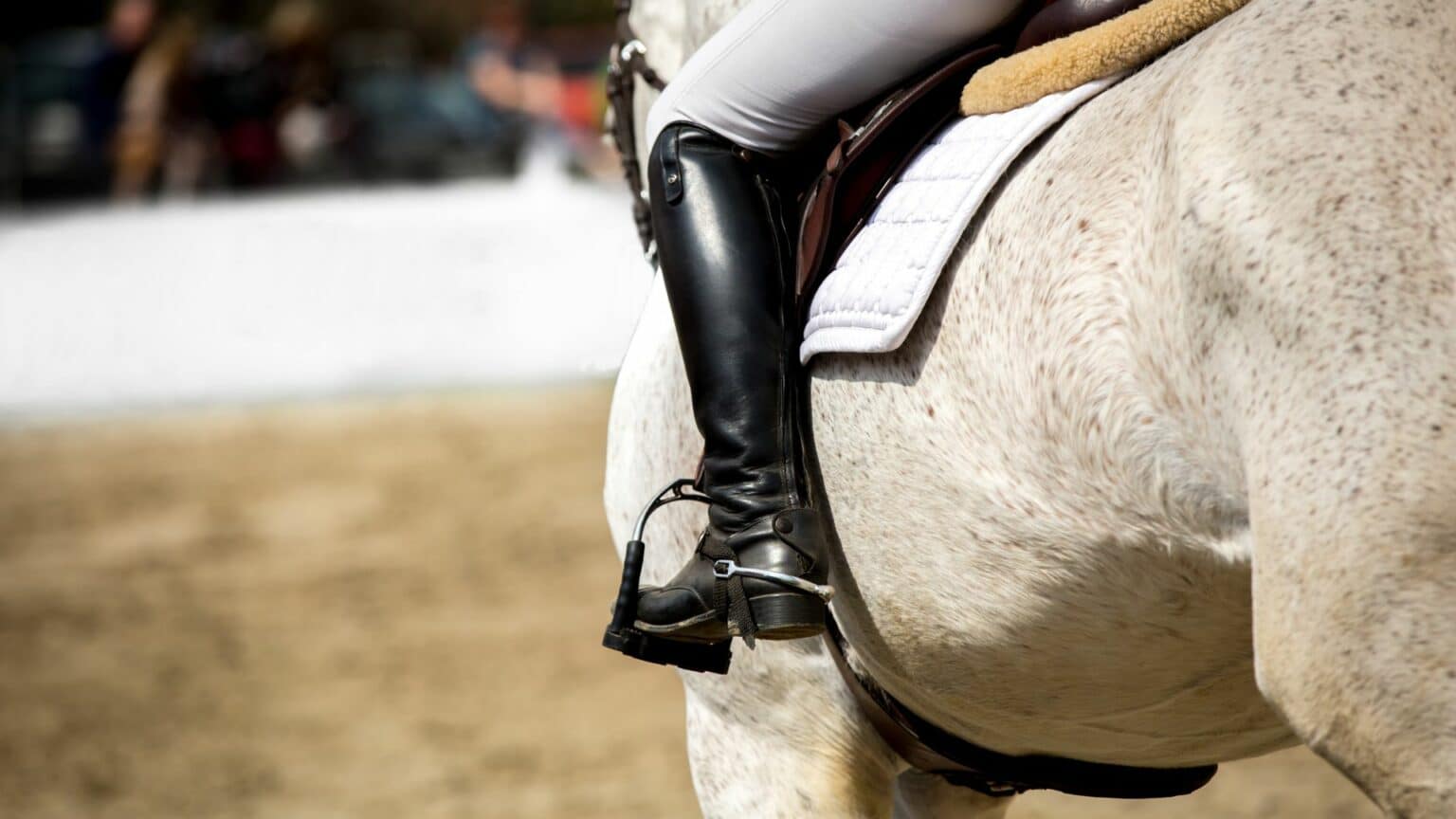
If you’re someone who is naturally confident and has a good sense of balance, you’ll likely find riding easier than someone who doesn’t have these qualities. Likewise, if you’re very determined and motivated to succeed, you’ll probably progress more quickly than someone who isn’t as focused.
That said, even the most gifted riders need to put in countless hours of practice before they can truly call themselves experts. And even then, there’s always something new to learn. So don’t be discouraged if you don’t feel like you’re progressing as quickly as you’d like — everyone learns at their own pace. Just keep at it and eventually you’ll get there!
So what’s the bottom line? How long does it realistically take to go from being a complete novice to being a good rider?
Well, most experts agree that it takes most people at least several months of regular riding before they start feeling truly comfortable and confident on their bike. If you’re able to practice frequently and put in the time and effort required, you could potentially shorten this timeline somewhat. However, even if everything goes perfectly, don’t expect to be an expert overnight — becoming a great rider takes time and patience.
What steps can we parents take to ensure a safe experience for our children while they take part in equestrian sports?
Equestrian sports are a great way for children to get exercise, fresh air, and spend time outdoors. However, as with any sport, there is always the potential for injury. Here are some tips for parents to help ensure their child has a safe experience while participating in equestrian sports:
1. Choose the right horse or ponies. Make sure your child is matched with an appropriate horse or pony in terms of size, temperament, and ability level. Avoid horses that may be unpredictable or dangerous.
2. Attend lessons together. If possible, attend your child’s riding lessons together so you can see firsthand what they are learning and how they are progressing. This will also give you an opportunity to meet the instructor and ask any questions you may have.
3. Wear proper safety gear. Helmets are a must when riding, both in lessons and during practice outside of lessons. In addition, make sure your child is wearing boots with heel guards and clothing that does not have loose straps or dangling cords that could get caught on anything while riding.
4. Inspect the tack and equipment regularly. It is important to inspect saddles, bridles, bits, stirrups, horseshoes, etc. for any signs of wear or damage. All of this equipment needs to be in good working order to help prevent injuries.
5. Be knowledgeable about the sport. It is important for parents to learn as much as they can about equestrian sports before their children begin participating. This way, you will be able to better understand the risks involved and how to best help your child stay safe while enjoying the sport.
6. Choose a reputable instructor. When it comes time to finding an instructor, do your research! Make sure that you find someone who is experienced and has a good reputation. Also, be sure to observe a few lessons before enrolling your child so that you can get a feel for the teaching style and whether or not it would be a good fit for your child.
7. Have realistic expectations. Equestrian sports are not without risk, so it is important to have realistic expectations when allowing your child to participate. Remember that you are entrusting your child’s safety to others, so make sure that you are comfortable with the level of risk involved before making any decisions.
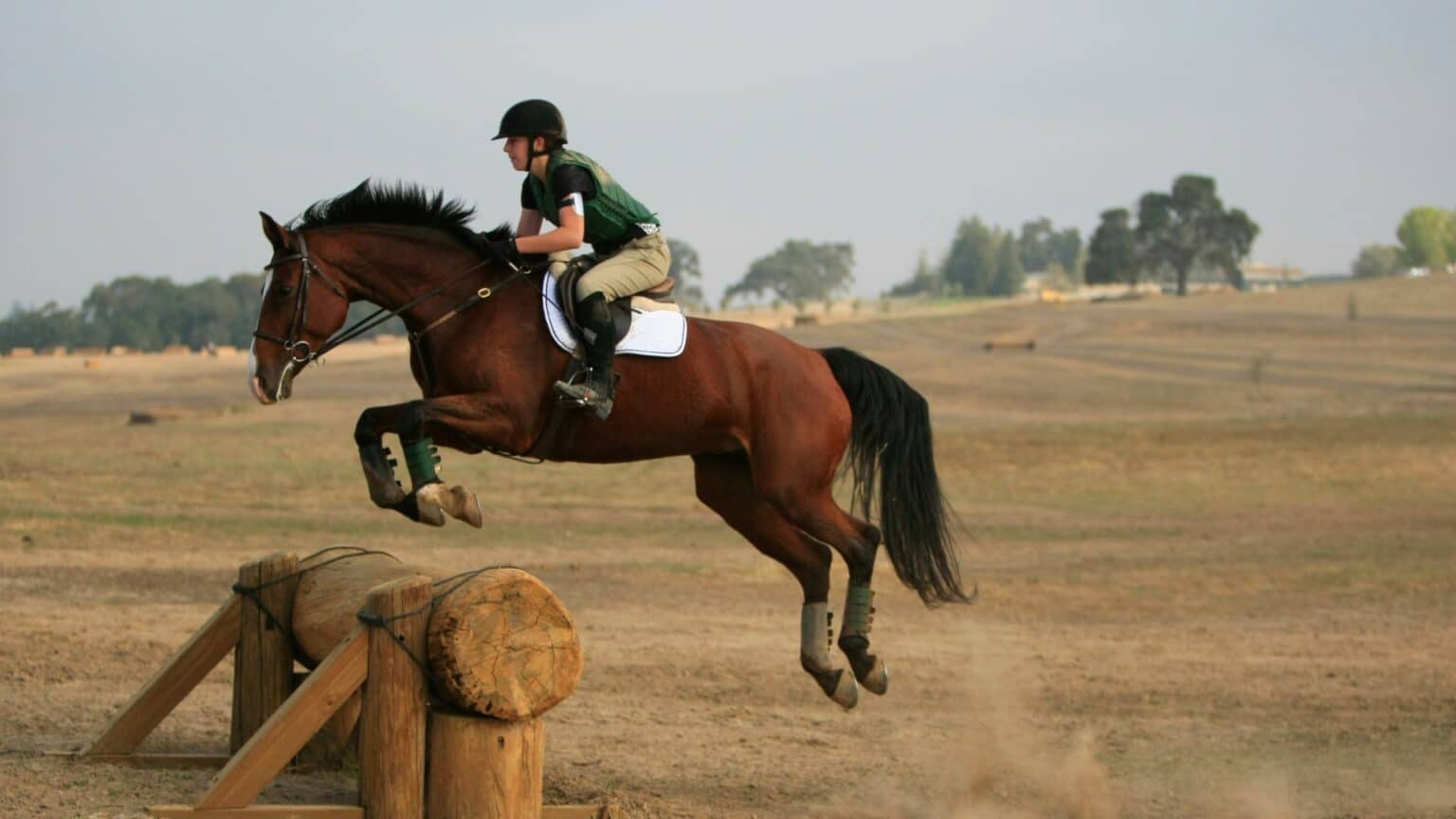
As parents, we want what’s best for our children and that includes letting them experience new things. For many kids, that means exploring the world of equestrian sports. Horseback riding can be a fun and rewarding activity for kids, but it’s important to make sure they stay safe while doing it. Here are some steps you can take as a parent to ensure your child has a safe and enjoyable experience with equestrian sports:
1. Choose the right program or instructor. Not all horseback riding programs are created equal. Do your research to find a reputable program that uses certified instructors and follows industry safety standards.
2. Make sure your child is ready physically and emotionally. Horseback riding requires a certain level of physical fitness and coordination. It’s also important that your child is mentally ready to handle being around horses and potentially experiencing falls or other injuries. If you have any concerns, talk to the program director or instructor before enrolling your child in lessons.
3. Review the safety rules with your child. Before they start taking lessons, go over the basic safety rules with them so they know what to expect and how to stay safe while around horses. This includes things like never approaching a horse from the rear, always being aware of where their feet are in relation to the horse’s hooves, and knowing how to safely lead and tack up a horse.
Monitor their progress regularly. Pay attention to how your child is progressing with their riding skills and provide feedback and encouragement along the way.
Benefits of stock horsemanship and training
There are many benefits to stock horsemanship and training. One of the most important benefits is that it helps build confidence in both the horse and rider. It also helps strengthen the bond between them. Furthermore, it teaches the horse to trust and respect the rider, as well as teaching the rider how to better communicate with their horse.
Another benefit is that it can help improve a horse’s overall health and fitness. By working different muscles groups and getting them used to being ridden regularly, they will stay in better condition both mentally and physically. This also reduces the likelihood of injuries occurring, as horses who are fit and healthy are less likely to pull up lame or suffer from other health issues.
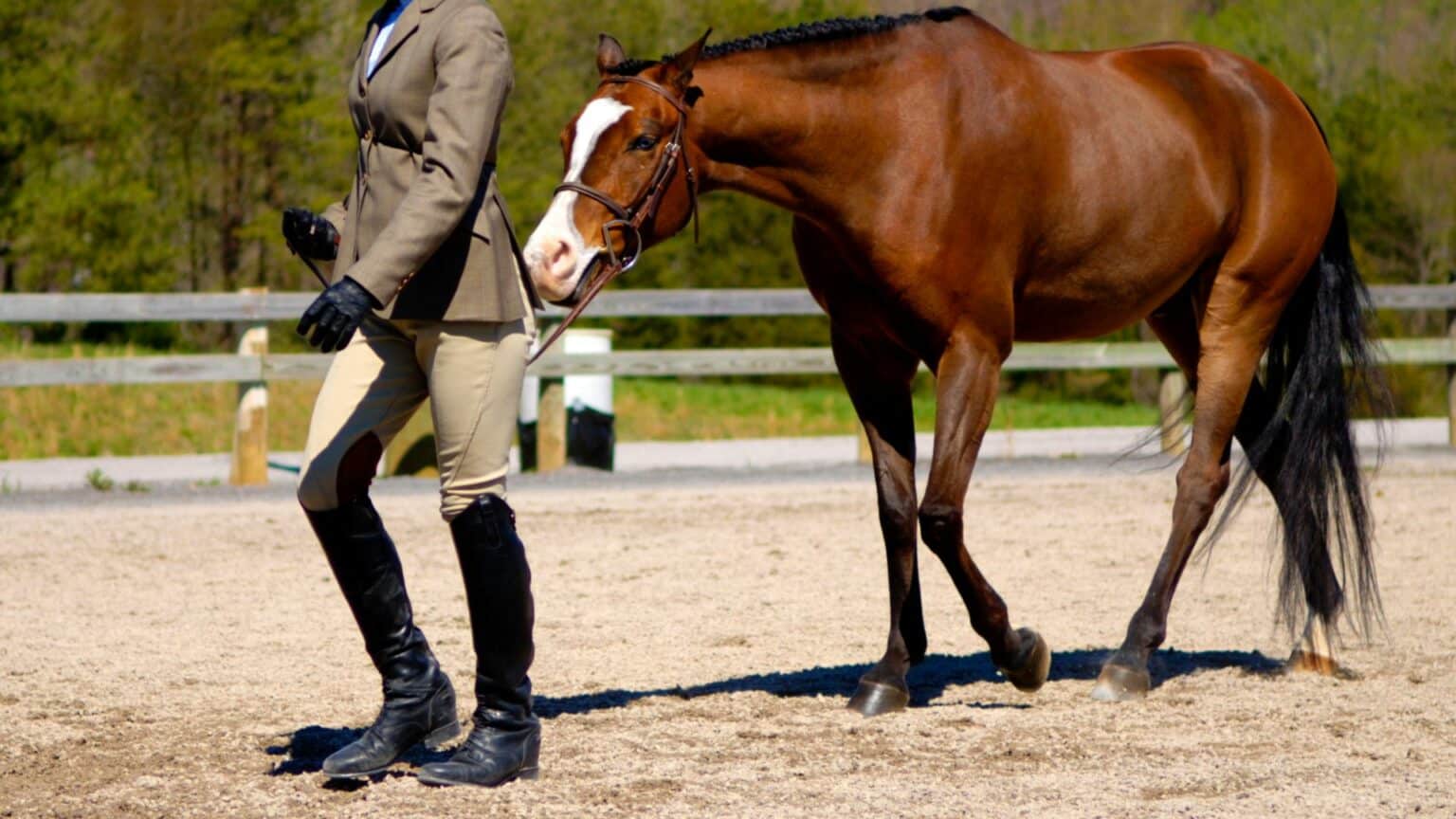
Stock horsemanship can also be used as a form of therapy for both horses and riders alike. For those suffering from anxiety or depression, spending time with a calm and trusting horse can be extremely therapeutic. The same goes for riders who may have experienced trauma or lost someone close to them — being around horses can help bring some peace and solace during difficult times.
Finally, learning stock horsemanship simply makes you a better rider overall. It gives you a greater understanding of how horses think and behave, which in turn makes you more effective and efficient in your riding. Whether you want to compete, ride for pleasure or simply improve your horsemanship skills, stock horsemanship is definitely worth considering!
You Also May Like
Articles You Might Enjoy
Copyright 2025 © Top Sports For Kids
Topsportsforkids.com is a participant in the Amazon Services LLC Associates Program, an affiliate advertising program designed to provide a means for sites to earn advertising fees by advertising and linking to Amazon.com.

